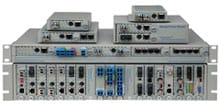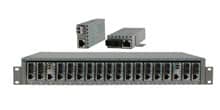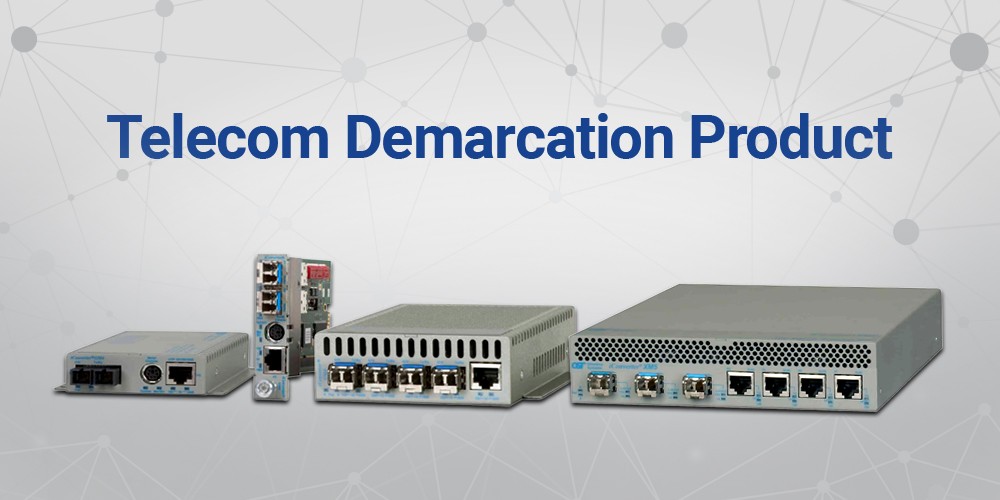- Products
- PoE Media Converters and Switches
- Ethernet & PoE Switches Product Selector
- Multi-Gigabit Ethernet and PoE Switches
- PoE PSE Commercial Switches
- PoE PSE Industrial Fiber Switches
- PoE Industrial Copper Extenders
- PoE Powered Media Converters
- PoE PSE Media Converters
- PoE Extenders & Injectors Product Selector
- Pluggable Transceivers Product Selector
- Single Pair PoE Products
- Product Lines

- iConverter Managed Multi-service Platform
- Copper to Fiber Media Converters
- Ethernet Media Converters
- 10 Gigabit Copper-to-Fiber
- 10/100/1000 Copper to 10 Gigabit Fiber
- 10/100/1000 Copper-to-Fiber with Integrated Management
- 10/100/1000 Industrial Copper-to-Fiber with Integrated Management
- 10/100/1000 Copper-to-Fiber with VLAN
- 10/100/1000 Dual Media Converter with VLAN
- Gigabit Copper-to-Fiber
- 10/100 Copper-to-Fiber with Integrated Management
- 10/100 Industrial Copper-to-Fiber with Integrated Management
- 10/100 Copper-to-Fiber with VLAN
- 10/100 Copper-to-Fiber
- Fast Ethernet Copper-to-Fiber
- Fast Ethernet Redundant Links
- 10Mbps Copper-to-Fiber
- 10Mbps Copper to Coax
- TDM Media Converters
- Serial Media Converters
- Ethernet Media Converters
- Fiber to Fiber Media Converters
- 10 Gigabit Fiber-to-Fiber Converter and Transponder
- 10 Gigabit Industrial Converter and Transponder
- SFP-to-SFP Fiber Converter and Transponder
- SFP-to-SFP Industrial Fiber Converter and Transponder
- Gigabit Fiber to-Fiber with 3 Rs
- 100/1000 Fiber-to-Fiber with 3 Rs
- Gigabit Fiber-to-Fiber
- Fast Ethernet Fiber-to-Fiber with 3 Rs
- Fast Ethernet Fiber-to-Fiber
- OC-3/STM-1 Fiber-to-Fiber
- OC-12/STM-4 Fiber-to-Fiber
- Carrier Ethernet Network Interface Devices
- CE 2.0 - 10G Demarcation NID
- CE 2.0 - 10G Demarcation and Aggregation NID
- CE 2.0 - 10/100/1000 Mult-port NID
- CE 2.0 - 10/100/1000 Mult-port NID with PoE
- CE 2.0 - 10/100/1000 8-Port NID
- SFP NID - Gigabit SFP NID
- microNID - 100/1000 compact NID
- CE 1.0 Service OAM - 10/100/1000 NID
- CE 1.0 Link OAM - 10/100/1000 Copper-to-Fiber NID
- CE 1.0 Link OAM - 10/100 Copper-to-Fiber NID
- CE 1.0 Link OAM - Gigabit Fiber-to-Fiber NID
- CE 1.0 Link OAM - Fast Ethernet Fiber-to-Fiber NID
- CWDM Multiplexers
- T1/E1 Multiplexers
- Ethernet Switch Modules
- Management System
- Chassis Options

- 1-Module Industrial Chassis

- RuggedNet Industrial Switches and Extenders
- Industrial PoE PSE Fiber Switches
- Multi-Gigabit Managed Industrial PoE+/BT Switches
- Multi-Gigabit Unmanaged Industrial PoE+/BT Switches
- 10G Managed 802.3bt PoE Switches
- 10G Unmanaged 802.3bt PoE Switches
- 10G Managed PoE+ Switches
- 10G Unmanaged PoE+ Switches
- 1G Managed PoE+ Switches
- 1G Unmanaged PoE+ Switches
- 1G Unmanaged 802.3bt PoE Switches
- 1G Managed 802.3bt PoE Switches
- Industrial SPE Switches
- Industrial Ethernet Switches
- Industrial PoE Copper Extenders
- Industrial Power Supplies

- OmniConverter Media Converter, Switches and Extenders
- PoE PSE Media Converters
- 10G Multi-Gigabit / Multi-Rate PoE Media Converter
- 10G Multi-Gigabit / Multi-Rate Media Converter
- 10/100 Multi-port PoE+ Media Converter
- 10/100 PoE+ Media Converter
- 10/100/1000 Multi-Port PoE+ Media Converter
- Industrial 10/100/1000 Multi-Port PoE+ Media Converter
- 10/100/1000 PoE+ Media Converter
- 10/100/1000 PoE++ 60W-100W Media Converter
- Industrial 10/100 Multi-port PoE+ Media Converter
- 1U Rack-Mount Shelf
- PoE PSE Compact Switches
- Multi-Gigabit Managed PoE+/BT Switches
- Multi-Gigabit Unmanaged PoE+/BT Switches
- 10G Managed 802.3bt PoE Switches
- 10G Unmanaged 802.3bt PoE Switches
- 10G Managed PoE+ Switches
- 10G Unmanaged PoE+ Switches
- 1G Managed PoE+ Switches
- 1G Unmanaged PoE+ Switches
- 1G Managed 802.3bt PoE Switches
- 1G Unmanaged 802.3bt PoE Switches
- Ethernet Switches
- PoE Copper Extenders
- Single Pair Ethernet (SPE)
- PoE Injectors

- miConverter Unmanaged Miniature Media Converters
- 10/100/1000 Copper-to-Fiber
- Industrial 10/100/1000 Copper-to-Fiber
- 10/100/1000 Ultra-Compact Copper-to-Fiber
- Gigabit Copper-to-Fiber
- 10/100/1000 Copper-to-Fiber PoE Powered
- 10/100 Copper-to-Fiber
- 10/100 Ultra-Compact Copper-to-Fiber
- 10/100 Copper-to-Fiber PoE Powered
- 18-Module Chassis
- Industrial 10/100 Copper-to-Fiber PoE Powered

- FlexSwitch Compact Switches
- Solutions
- Company
- Support
- How to Buy
What is a Demarcation Device or NID (Network Interface Device)?

Establishing a demarcation point between service provider and customer is critical for network management. A Demarcation Device or NID (Network Interface Device) is a network device that distinguishes the border between the two interconnected networks. In this blog, we will dissect the technical nuances of demarcation devices, and explore the key features they possess from the Service Provider and from the customer perspective.
Defining the Demarcation Point
In networking lingo, 'demarcation' signifies the point where responsibility transitions from the service provider to the customer. This demarcation point is vital for troubleshooting, maintenance, and ensuring the robustness of the network.
The Technical Anatomy of Demarcation Devices
The Demarcation Device, strategically positioned at the customer's premises, is the physical gateway where the external network converges with the internal network. Its primary functions designed to provide a seamless interface while upholding network integrity.
-
Location and Placement
Demarcation devices are conventionally installed at the point of entry where the external network line enters the customer's premises. This strategic positioning ensures that the service provider maintains control and accountability up to this demarcation point.
-
Isolation and Protection
A fundamental feature of demarcation devices is their capacity to isolate and shield the customer's network. This technological barrier prevents issues on the service provider's side from affecting the internal network, safeguarding both reliability and security.
-
Testing and Maintenance
Demarcation devices provide a controlled environment for testing and maintenance. Service providers can conduct diagnostics, troubleshoot connectivity issues, and perform routine maintenance without disrupting the customer's operations. This remote accessibility expedites issue resolution.
-
Standardization
The use of demarcation devices contributes to standardization in the telecommunications industry. Establishing a consistent demarcation point and device specifications enhances interoperability between different service providers and customer premises equipment.
Key Features to Look for in a Demarcation Device
Selecting the right demarcation device is crucial for maintaining a robust and reliable network. As technology evolves, the demands on demarcation devices have become more sophisticated. Here are key features to consider when evaluating demarcation solutions:
-
Y.1731 End-to-End Performance Monitoring:
Importance: Enables comprehensive performance monitoring across the entire network, allowing service providers to ensure quality of service (QoS) and meet service level agreements (SLAs).
Benefit: Real-time monitoring of key performance indicators such as packet delay, jitter, and packet loss, providing insights into network health.
-
RFC 2544 Ethernet Service Activation Testing:
Importance: Validates the performance of Ethernet services during activation, ensuring that the network meets predefined standards.
Benefit: Accurate and standardized testing procedures for assessing throughput, frame loss, and other critical parameters during service activation.
-
IEEE 802.1ag Connectivity Fault Management:
Importance: Facilitates rapid fault detection and isolation, minimizing downtime and enhancing network reliability.
Benefit: Efficient detection and reporting of connectivity faults, enabling swift response to potential issues within the network.
-
ITU-T G.8262 Sync-E and IEEE 1588v2 Timing:
Importance: Ensures precise synchronization and timing for applications that demand high accuracy, such as financial transactions or multimedia streaming.
Benefit: Compliance with international standards for synchronization, enabling seamless integration with networks requiring precise timing synchronization.
Benefits of Demarcation Devices for Service Providers and their Subscribers (Customers)
For Service Providers:
Service Level Agreements (SLA) Compliance: Demarcation devices enable service providers to adhere to SLAs by offering a clear demarcation point, allowing them to guarantee uptime and service quality to customers.
Efficient Troubleshooting: The isolation capability of demarcation devices assists service providers in efficiently identifying and addressing network issues. This results in faster problem resolution and improved overall network performance.
For Customers:
Guaranteed Uptime: Customers benefit from demarcation devices by enjoying a guaranteed level of service uptime, as specified in the SLA. This ensures a reliable and consistent network experience.
Issue Isolation: Demarcation devices empower customers to isolate network issues, distinguishing between problems on their premises and those originating from the service provider. This clarity streamlines communication and accelerates issue resolution on the customer’s network.
Omnitron System's Network Interface Devices
Enter Omnitron Systems, a leading provider of Demarcation Devices aka Network Interface Devices (NIDs). Omnitron's iConverter product line of NIDs are available in standalone or plug-in chassis based modules, offering flexibility and scalability to service providers worldwide. Renowned for their reliability and advanced capabilities, Omnitron's demarcation solutions enable service providers to deliver SLA Ethernet services to their customers by implementing latest telecom standards. The choice of Omnitron's demarcation products reflects a commitment to excellence, ensuring efficient network performance and customer satisfaction.
For a comparison and list of Omnitron Network Inteface Devices and their key features, click here.
Conclusion
When discussing data transmission between service providers and customers, demarcation devices emerge as a critical piece of the network puzzle, providing a technical framework for network organization. A comprehensive understanding of these devices is imperative for network administrators and end-users alike, as they form the foundation for reliable, secure, and efficient telecommunications connectivity. As technology progresses, demarcation devices will undeniably continue to be central to the evolution of interconnected networks, with Omnitron Systems at the forefront of delivering innovative demarcation solutions.









